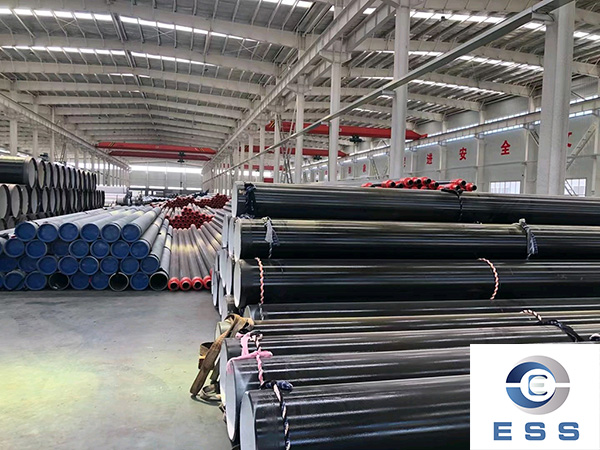The ultrasonic probe can realize the mutual conversion of electric energy and sound energy. The physical characteristics of ultrasonic waves when propagating in elastic media are the basis of the principle of ultrasonic flaw detection of seamless carbon steel pipes. Directionally launched ultrasonic beams encounter defects when propagating inside the tube, causing wave reflection and wave attenuation.
After the signal processing of the flaw detector, if the reflection method is used for flaw detection, the defect echo signal can be obtained; if the penetration method is used for flaw detection, the defect signal can be obtained through the attenuation of transmission. Both can give quantitative indications of defects through the instrument. Using the piezoelectric effect or the principle of electromagnetic induction, different types of ultrasonic waves can be excited inside the tube. Therefore, both piezoelectric ultrasound and electromagnetic ultrasound can be used for ultrasonic inspection of pipelines. But electromagnetic ultrasound is only suitable for ferromagnetic materials.

Ultrasonic flaw detection method of seamless pipe:
1. The shear wave (or plate wave) reflection method (or penetration method) is used for automatic detection under the relative motion of the probe and the seamless steel pipe. Only special large-diameter seamless steel pipes can be manually inspected.
Automatic or manual inspection should ensure that the sound beam scans the entire surface of the pipe.
Note: During automatic detection, the two ends of the seamless steel pipe will not be effectively detected, but the area should be controlled within 200mm.
2. When detecting longitudinal defects, the sound beam propagates in the circumferential direction in the tube wall: when detecting transverse defects, the sound beam propagates in the tube wall along the direction of the tube axis. portrait
The inspection for transverse defects shall be carried out in two opposite directions of the pipe.
3. When the buyer does not recommend checking the horizontal defects, the supplier only checks the vertical defects. After negotiation between the supplier and the buyer, the inspection of vertical and horizontal defects shall be carried out.
It can only be done in one direction of the tube.
4. In automatic or manual inspection, the coupling medium with good coupling effect and no damage to the surface of the seamless steel pipe should be selected.
Suspicious seamless steel pipes can be handled by any of the following methods:
5. Carry out repeated flaw detection according to the methods specified in this standard. If there is no defect signal or the signal amplitude is lower than the preset alarm level, the test is considered qualified.
6. After the visible defects of the suspicious parts are removed, if the size of the seamless steel pipe is within the allowable tolerance range, it should be carried out according to the method specified in this standard.
Method retest checks. If no defect signal is generated or the signal amplitude is lower than the preset alarm level, the inspection is considered qualified.
7. Carry out other non-destructive testing of suspicious parts according to the methods and acceptance standards agreed by both parties.
8. Remove all suspicious websites.
9. The suspected seamless steel pipe failed this inspection.
Tip: Seamless black steel pipes are made of ungalvanized steel. It takes its name from the skin, which has a dark iron oxide coating on its surface. It is used in applications that do not require galvanized steel.
Read more :Influence factors on impact toughness of erw welded pipe













 Eastern Steel Manufacturing Co.,Ltd not only improve product production and sales services, but also provide additional value-added services. As long as you need, we can complete your specific needs together.
Eastern Steel Manufacturing Co.,Ltd not only improve product production and sales services, but also provide additional value-added services. As long as you need, we can complete your specific needs together.










